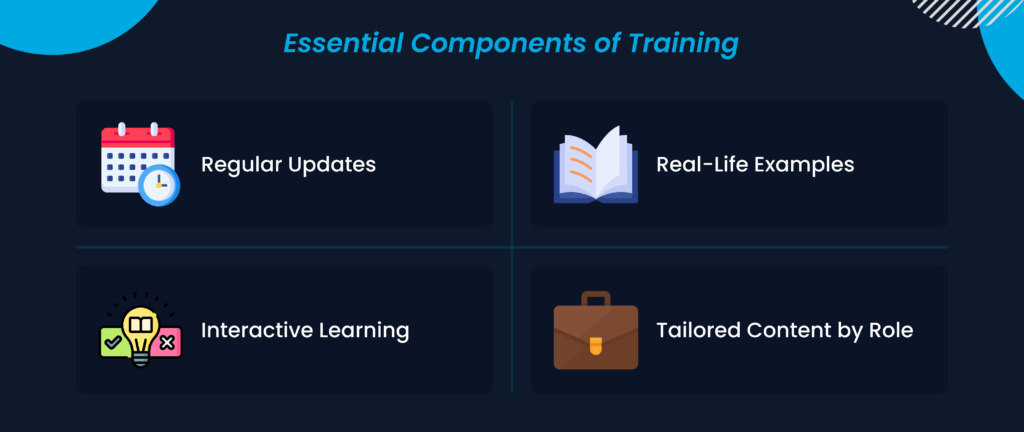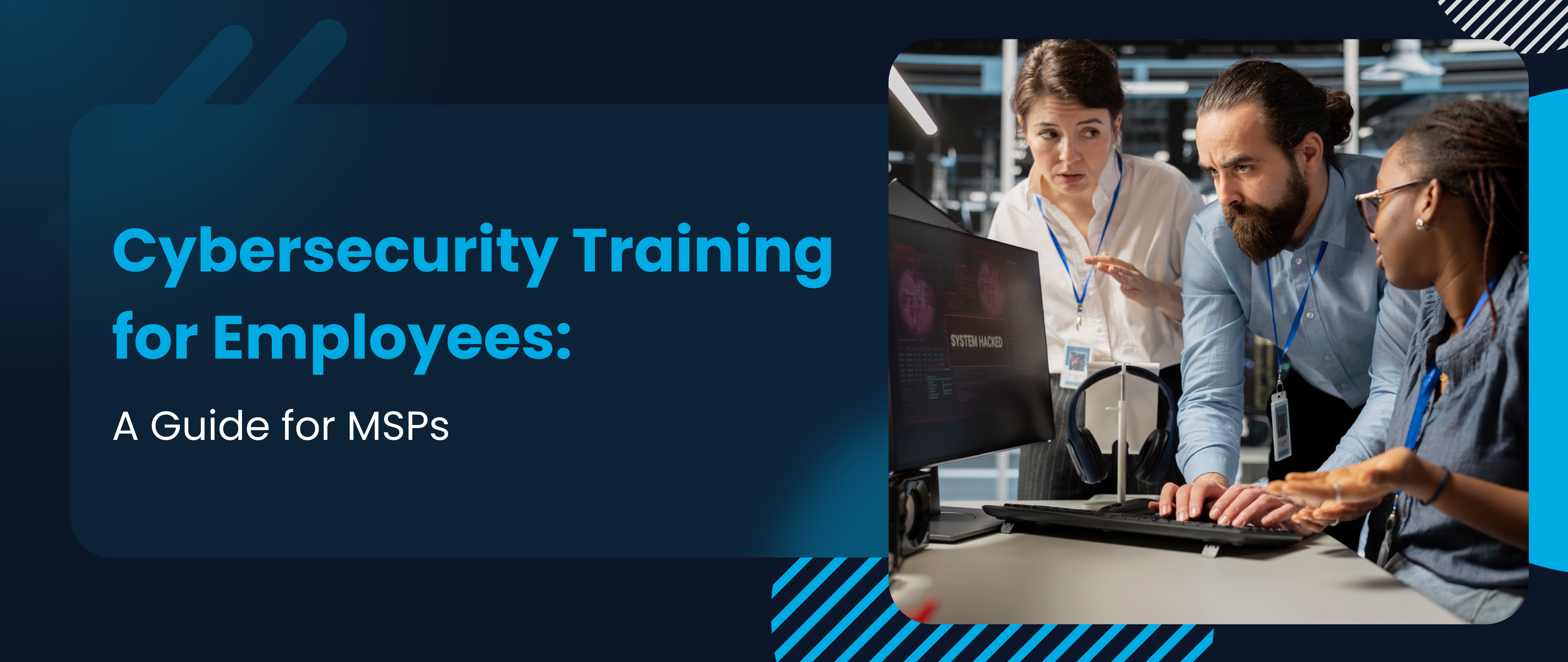Cyber threats can strike any organization, big or small. Many successful attacks happen because employees click on bad links, use simple passwords, or respond to fake emails. MSPs can solve these problems by offering reliable cybersecurity training for employees through a guide. With the right program, staff learn to spot dangerous messages, avoid risky sites, and respond quickly when something seems off. This daily awareness lowers the risk of expensive data breaches and protects a company’s reputation through Cybersecurity training for employees.
Why Cybersecurity Training for Employees Matters for the Modern Workforce
Online threats keep changing, and criminals often target regular employees as a way in. The Verizon Data Breach Investigations Report found that 82% of breaches involved some form of employee action or mistake. Cybersecurity training for employees provides advanced firewalls and antivirus software that can fail if someone clicks on a well-crafted phishing link. Well-trained workers serve as the first line of defense, spotting harmful emails or files right away and preventing serious problems. Why Cybersecurity Training Matters for the Modern Workforce
Online threats constantly evolve, and attackers often target regular employees as an easy entry point. According to the Verizon Data Breach Investigations Report, 82% of breaches involved employee mistakes. Even top-tier firewalls and antivirus tools can’t stop every threat if someone clicks a convincing phishing link.
That’s why well-trained employees are your first line of defense. When workers know what to look for, they can identify harmful messages or files right away and prevent serious issues.
Essential Components of an Effective Cybersecurity Training for Employees Program

Regular Updates
Threats change all the time. Topics like phishing, malware, and social engineering need frequent attention. By giving refreshers every month or quarter, MSPs help staff stay alert to fresh tricks and evolving tactics.
Interactive Learning Modules
Short videos, quizzes, and games make important ideas easier to grasp. For instance, mock phishing emails show employees what real threats look like. This hands-on practice teaches them to notice red flags before harm is done.
Real-Life Examples
Case studies from actual attacks help teams understand how security breaches happen in real workplaces. The Cybersecurity and Infrastructure Security Agency (CISA) notes that real stories and tangible examples stick better than theory alone. When workers see how a single click can open the door to an entire system, they appreciate why caution is vital in cybersecurity training for employees.
Tailoring for Each Role and Industry
Not every employee faces the same problems. For example, accounting teams often process payment requests, while human resources staff deal with personal data. MSPs can adjust cybersecurity lessons to match each department’s needs. Some industries, such as healthcare or finance, have strict rules that require special modules. Customized content links security lessons to daily tasks, making them more likely to stick.
Benefits for MSPs and Their Clients in Cybersecurity training for Employees
When MSPs offer cybersecurity training for employees, everyone benefits. Workers learn how to avoid common attacks, which reduces downtime and costly fixes. It also helps clients meet compliance standards and avoid fines.
Implementing Cybersecurity Training for Employees: Best Practices and Steps for MSPs
1. Assess Risks and Needs
Start by understanding each client’s size, industry, and specific threats. Some may worry more about ransomware, others about phishing. This analysis helps shape a program that truly fits.
2. Choose Quality Training Providers
Work with trusted providers that specialize in cybersecurity training for employees. Look for programs with flexible modules, tracking tools, and easy integration. This makes the training scalable and adaptable as threats evolve.
3. Create a Rollout Timeline
Avoid overwhelming employees. Start with the basics—strong passwords, phishing awareness—then follow up with monthly or quarterly lessons on new threats. Small, steady steps work best.
4. Run Ongoing Simulations
Phishing simulations test how well employees apply their training. By tracking click rates on fake emails, MSPs can measure real progress. Over time, those numbers should drop.
5. Offer Clear Support Channels
Employees need an easy way to report suspicious emails or activity. Fast reporting helps contain threats quickly. A safe space for questions also encourages more people to speak up.
6. Measure Outcomes
Look for fewer malware reports, reduced phishing click rates, and fewer support tickets. According to the FTC, even small firms can lose thousands to breaches. Well-trained teams save money and protect company reputation.
Conclusion
Consistent cybersecurity training for employees helps teams stay alert and defend company data. MSPs that offer tailored programs based on client size and industry stand out as true partners. Over time, this leads to fewer incidents, smoother operations, and stronger client relationships.

Are you an MSP looking for a practical way to teach your clients’ teams about cybersecurity? ClipTraining offers short, easy-to-understand lessons that fit many industries.
Are you an MSP looking for a practical way to teach your clients’ employees about cybersecurity? Clip Training offers short, clear lessons that fit many industries. Book a demo to explore how our training can help you lower risk for your clients and build trust in your IT services.


